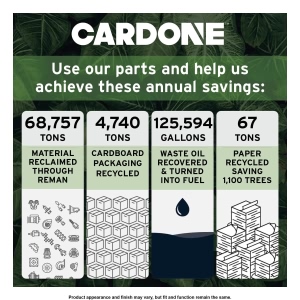< Back ×
2006 GMC Yukon Brake Master Cylinder Bleeder Tool
My Vehicle Change Vehicle
2006 GMC Yukon
< Back to View All
Brake Boosters & Brake Master Cylinders
- Department
- Brands
- Prices

 Product Specifications
Product Specifications- Bleeder Adapters Included: No
- Bleeder Pressure Gauge Included: No
- Bleeder Tubing Included: No
- E-Waste: No
- Material: Plastic
- Package Contents: Bleeder Tool
- Product Condition: New
- UPC: 082617849678
- Part Description: 2006 GMC Yukon Master Cylinder Bleeding Tool
Vehicle Fitment- 2006 GMC Yukon | All Trims | All Engines
FAQ for Brake Master Cylinder Bleeder Tool Repair
Q: What should we do if the brake system warning lamp remains illuminated?
A:
You should not allow the vehicle to be driven until it is diagnosed and repaired.
By Bob
GM Specialist
28/10/2022Q: What is the pre-charge bleed procedure?
A:
You need to ensure that the master cylinder reservoir is filled to at least the minimum-fill level, ensure the master cylinder reservoir cap is on securely, install a scan tool, turn on the ignition, select the VSES Special Functions menu on the scan tool, select Pre-charge Bleed, press the On key, evaluate the feel of the brake pedal, and ensure that the master cylinder reservoir is filled to at least the minimum-fill level.
By Bob
GM Specialist
28/10/2022Q: What should be noticed when adding fluid to the brake master cylinder reservoir?
A:
You should use only Delco Supreme 11(R), GM P/N 12377967 (Canadian P/N 992667), or equivalent DOT-3 brake fluid from a clean, sealed brake fluid container.
By Bob
GM Specialist
28/10/2022Q: What should we do before performing the automated bleeding procedure?
A:
The base hydraulic brake system must be bled before performing this automated bleeding procedure. If you have not yet performed the base hydraulic brake system bleeding procedure.
By Bob
GM Specialist
28/10/2022Q: What is the procedure for the master cylinder bench bleeding?
A:
You need to secure the mounting flange of the brake master cylinder in a bench vise, remove the master cylinder reservoir cap and diaphragm, install suitable fittings to the master cylinder ports, install transparent hoses to the fittings installed to the master cylinder ports, route the hoses into the master cylinder reservoir, fill the master cylinder reservoir to at least the half-way point, ensure that the ends of the transparent hoses running into the master cylinder reservoir are fully submerged in the brake fluid, depress and release the primary piston until fluid flows freely from the ports with no evidence of air bubbles, remove the transparent hoses from the master cylinder reservoir, install the master cylinder reservoir cap and diaphragm, remove the fittings with the transparent hoses and the master cylinder from the vise.
By Bob
GM Specialist
28/10/2022Q: What is the automated bleed procedure?
A:
You need to ensure that the master cylinder reservoir is filled to at least the minimum-fill level and that the master cylinder reservoir cap is on securely, install a scan tool, turn on the ignition, select the VSES Special Functions menu on the scan tool, select Pre-charge Bleed, press the On key, select Automated Bleed, press the On key, ensure that the master cylinder reservoir is filled to at least the minimum-fill level, perform a base brake system bleed, evaluate the feel of the brake pedal, and ensure that the master cylinder reservoir is filled to at least the minimum-fill level.
By Bob
GM Specialist
28/10/2022Q: What should we do if you have performed a brake master cylinder bench bleeding on this vehicle, or if you disconnected the brake pipes from the master cylinder?
A:
You should ensure that the brake master cylinder reservoir is full to the maximum-fill level, loosen and separate the front brake pipe, allow a small amount of brake fluid to gravity bleed, reconnect the brake pipe to the master cylinder port and tighten securely, depress the brake pedal fully and maintain steady pressure on the pedal, loosen the same brake pipe to purge air, tighten the brake pipe, release the brake pedal, loosen and separate the rear brake pipe from the master cylinder, and ensure that both of the brake pipe-to-master cylinder fittings are properly tightened.
By Bob
GM Specialist
28/10/2022Q: What are the ABS automated bleed procedures (w/o JL4)?
A:
You need to install a scan tool, start the engine and allow the engine to idle, depress the brake pedal firmly and maintain steady pressure on the pedal, begin the automated bleed procedure, complete the automated bleed procedure, turn the ignition off, remove the scan tool, fill the brake master cylinder reservoir to the maximum-fill level, bleed the hydraulic brake system, deplete the brake booster power reserve, depress and release the brake pedal, turn the ignition key on with the engine off, check to see if the brake system warning lamp remains illuminated, drive the vehicle to exceed 13 kph (8 mph) to allow ABS initialization to occur, and observe brake pedal feel.
By Bob
GM Specialist
28/10/2022Q: What should we do after releasing the brake pedal?
A:
If the brake pedal feels spongy, repeat the automated bleeding procedure. If the brake pedal still feels spongy after repeating the automated bleeding procedure inspect the brake system for external leaks.
By Bob
GM Specialist
28/10/2022Q: What should we do if the brake pedal still feels spongy after repeating the bleeding procedure?
A:
You should inspect the brake system for external leaks, and pressure bleeds in the hydraulic brake system to purge any air that may still be trapped in the system.
By Bob
GM Specialist
28/10/2022See more FAQs (5)
